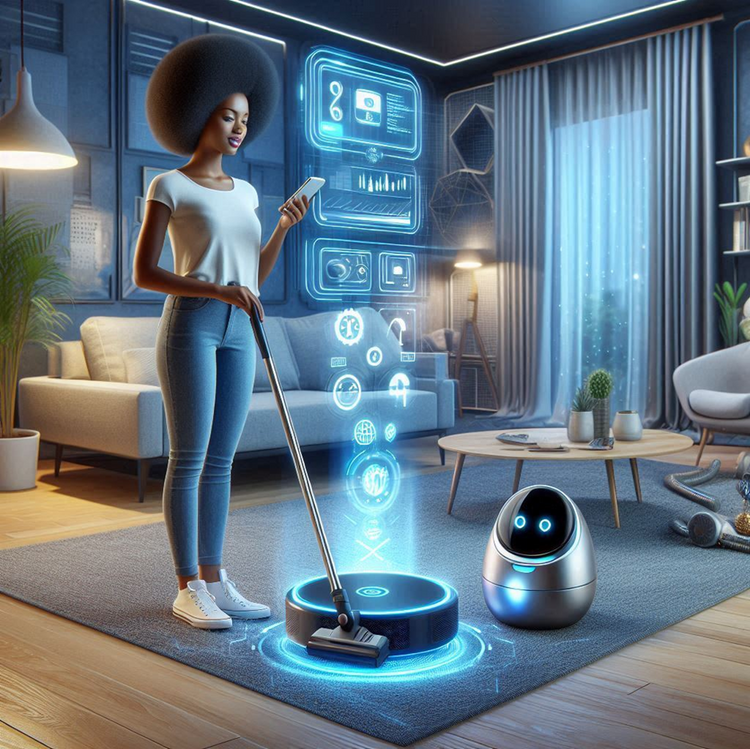Building a Smarter Home: Understanding the Role of Home Automation Protocols
Keywords- Home automation protocols, Smart home protocols, Best protocols for home automation, Different types of home automation protocols, How home automation protocols work, Choosing the right home automation protocol, Benefits of using home automation protocols, Challenges of home automation protocols and Future of home automation protocols.

The domain of home automation has witnessed exponential growth, transforming houses into intelligent spaces that cater to our comfort and convenience. At the heart of these smart homes lies a complex network of devices that communicate seamlessly with each other. This interconnectivity is made possible through home automation protocols. These protocols serve as the language devices used to understand and interact with each other, enabling the creation of a cohesive and efficient smart home ecosystem.
Understanding Home Automation Protocols
Home automation protocols are essentially communication standards that govern the exchange of data between different smart devices. They establish a common language that allows devices from various manufacturers to work together harmoniously. Without these protocols, your smart home would be a chaotic collection of incompatible gadgets.

Different Types of Home Automation Protocols

Plenty of smart home protocols exist, each with its own strengths and weaknesses. Some of the most prominent ones include-
Wi-Fi
While primarily known for internet connectivity, Wi-Fi is also a popular home automation protocol. It offers high data transfer rates but can be prone to congestion and interference in crowded environments.
Zigbee
This protocol is specifically designed for low-power, mesh networking applications. It excels in battery life and range, making it ideal for sensors and actuators.

Z-Wave
Similar to Zigbee, Z-Wave is optimized for low-power devices. It offers strong security features and is widely adopted in the smart home industry

Bluetooth
Initially designed for short-range communication between devices, Bluetooth Low Energy (BLE) has found its application in smart homes. It's suitable for controlling nearby devices like smart speakers and wearables.
Thread
This protocol is built on IPv6 and focuses on low-power, mesh networking. It offers reliable and secure communication, making it a promising option for smart home applications.

Matter
As a unified standard, Matter aims to bridge the gap between different home automation protocols. It simplifies device compatibility and ensures interoperability.
How Home Automation Protocols Work
Home automation protocols operate by defining the structure and format of data packets exchanged between devices. These packets contain information about the device, its status, and the desired actions. When a user interacts with a smart device, the protocol translates the command into a standardized format, which is then transmitted to other devices involved in the operation.

Choosing the Right Home Automation Protocol
Selecting the appropriate home automation protocol depends on several factors, including the type of devices, network size, power consumption, and security requirements. For instance, Wi-Fi might be suitable for high-bandwidth applications like video streaming, while Zigbee or Z-Wave would be better for energy-efficient sensors.
Benefits of Using Home Automation Protocols
The advantages of employing home automation protocols are manifold-
Interoperability
Devices from different manufacturers can communicate seamlessly, expanding your smart home ecosystem.
Efficiency
Protocols optimize data transmission, resulting in faster response times and reduced energy consumption.
Security
Many protocols incorporate robust encryption mechanisms to protect your data and devices from unauthorized access.
Reliability
Protocols ensure reliable communication between devices, minimizing disruptions and errors.
Challenges of home automation protocols

Despite their benefits, home automation protocols also present certain challenges-
Compatibility
While Matter is striving to unify the ecosystem, compatibility issues between different protocols can still occur.
Security Risks
Despite encryption, vulnerabilities can be exploited by malicious actors.
Complexity
Implementing and maintaining a complex smart home system can be overwhelming for some users.
Future of Home Automation Protocols
The landscape of home automation protocols is evolving rapidly, driven by technological advancements and changing consumer demands. Several trends are shaping the future of this domain-
Artificial Intelligence Integration
The integration of artificial intelligence will revolutionize home automation protocols. AI-powered devices will learn user preferences, anticipate needs, and optimize system performance. For instance, smart thermostats could adapt to occupants' routines and weather conditions, while intelligent lighting systems could create dynamic ambiance based on activities.

Enhanced Security
Security remains a paramount concern in the realm of smart home protocols. As devices become more interconnected, the potential attack surface expands. Future protocols will incorporate robust encryption, advanced threat detection, and regular security updates to safeguard user data and privacy.

Cloud-Based Services
Cloud-based platforms will play an increasingly important role in home automation. By offloading computational tasks to the cloud, devices can become more affordable and energy-efficient. Cloud services will also enable advanced features like remote access, voice control, and personalized experiences.

New Protocol Development
While existing home automation protocols serve many purposes, there's potential for the development of specialized protocols tailored to specific applications. For example, protocols optimized for audio or video streaming could enhance multimedia experiences in smart homes.
Conclusion
Home automation protocols are the invisible architects behind the convenience and efficiency of smart homes. They enable seamless communication between diverse devices, creating a harmonious living environment. While challenges like compatibility and security persist, the future holds immense promise for home automation protocols. With advancements in artificial intelligence and emerging standards like Matter, we can anticipate even more sophisticated and user-friendly smart homes.

